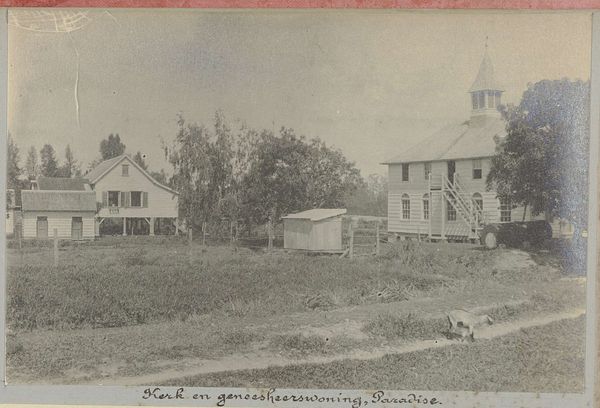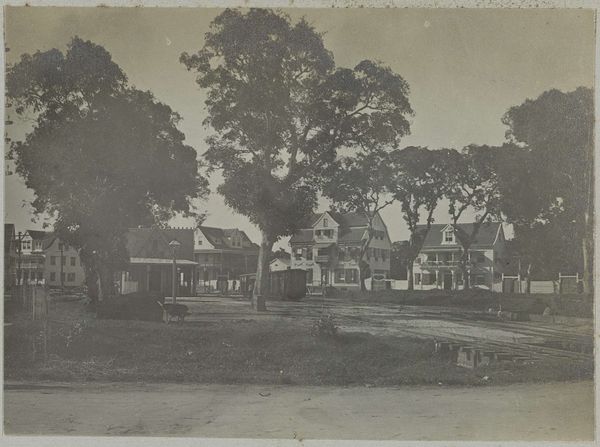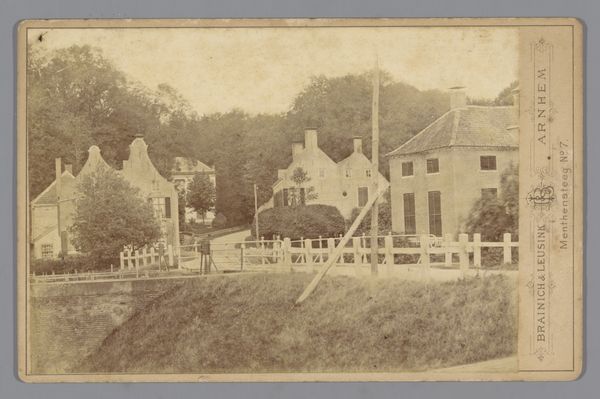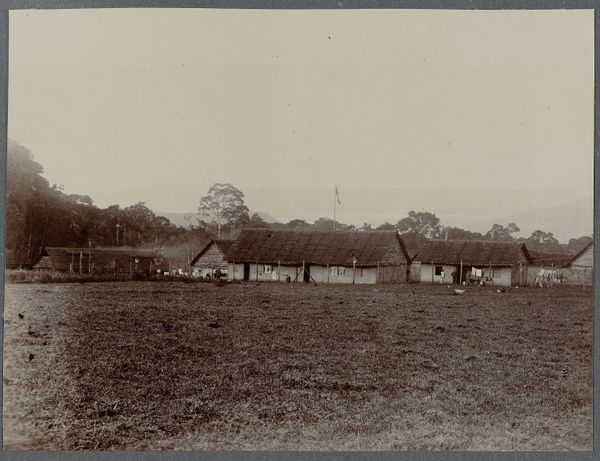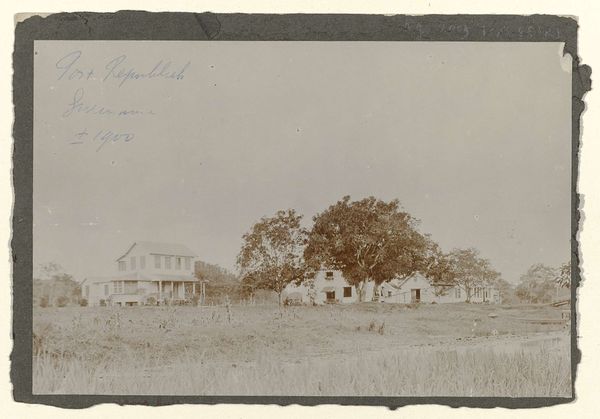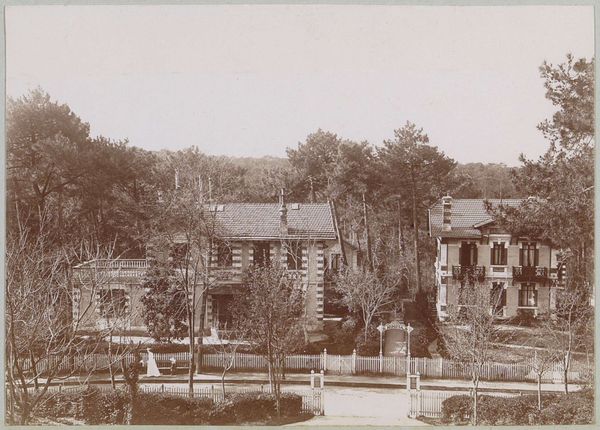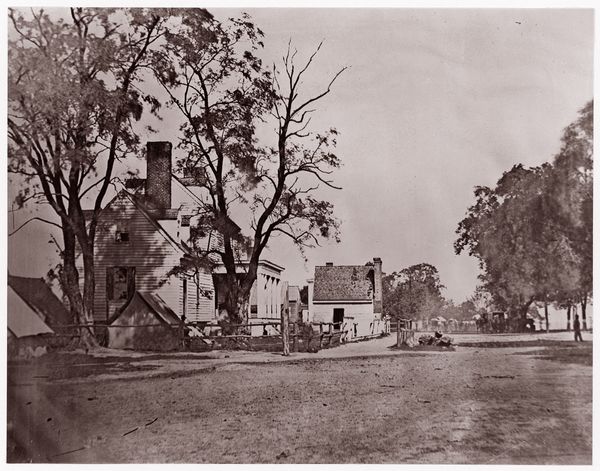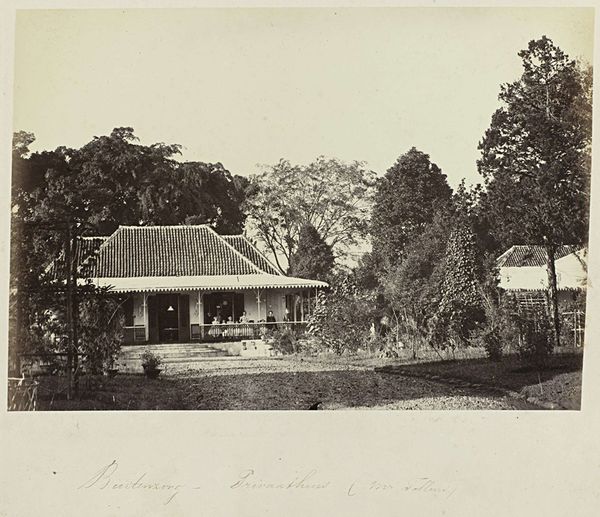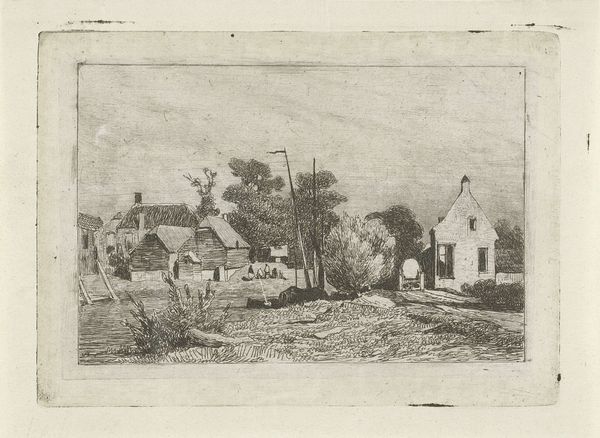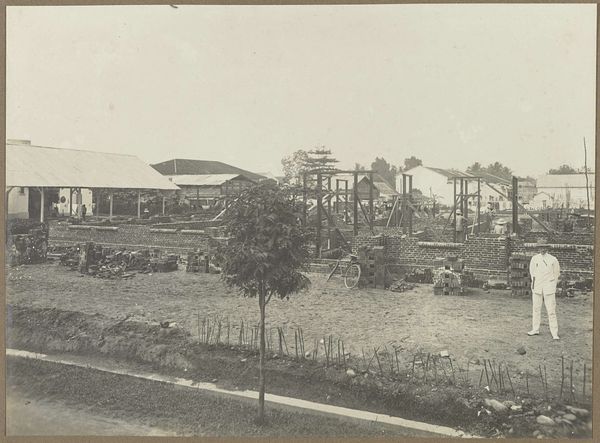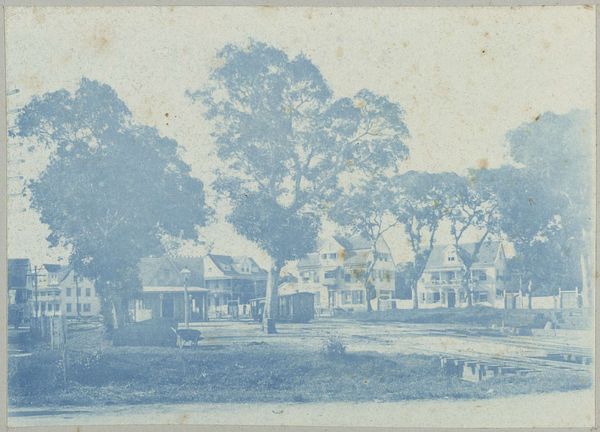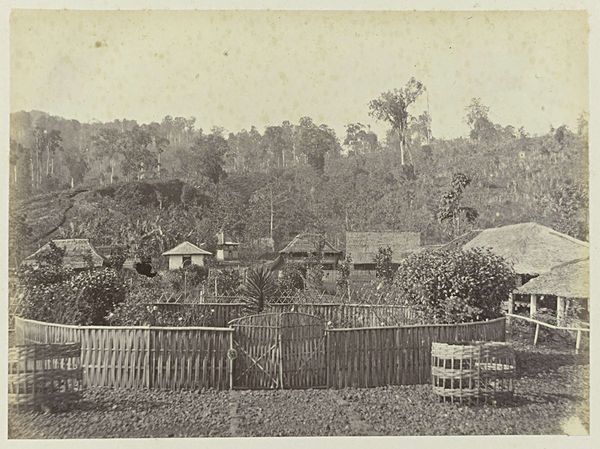
Loodsen en hospitaal van "Ma retraite", gezien uit het plantagehuis 1903 - 1910
0:00
0:00
photography
#
landscape
#
photography
#
cityscape
#
realism
Dimensions: height 120 mm, width 165 mm
Copyright: Rijks Museum: Open Domain
Editor: This photograph, taken between 1903 and 1910 by Hendrik Doijer, is titled "Loodsen en hospitaal van 'Ma retraite', gezien uit het plantagehuis"— "Warehouses and hospital of 'Ma Retraite', seen from the plantation house." It's a remarkably clear image given its age and seems to document everyday life in a bygone era. The light and shadow create a subtle tension, a sort of melancholic peace, wouldn't you agree? What catches your eye most in this composition? Curator: The organization of space here is particularly compelling. Notice how Doijer employs a series of receding planes to create depth. The foreground, defined by the picket fence and manicured vegetation, establishes an immediate sense of order. Your reading of the interplay of light and shadow is interesting. How do these buildings sit with each other? Editor: Well, the way they’re offset feels a bit jarring; they feel slightly out of place. But isn't that realism as well? It's like you captured real life—not all is perfect. Curator: Precisely! And the strategic placement of the dark, densely packed foliage in the midground further compresses the space. It creates a visual barrier that emphasizes the flatness of the photographic plane, doesn't it? How do the placement and scale change the context and tone? Editor: The flattening definitely contributes to that slightly melancholic mood I picked up on, it all becomes two dimensional; memories. But perhaps there is something I'm missing? Curator: The interplay between realism and formal organization is precisely where the interest of this piece lies, and its photographic medium helps solidify this vision, I appreciate your openness. I also found a deeper awareness for the role photography plays in crafting a particular narrative of space.
Comments
No comments
Be the first to comment and join the conversation on the ultimate creative platform.
